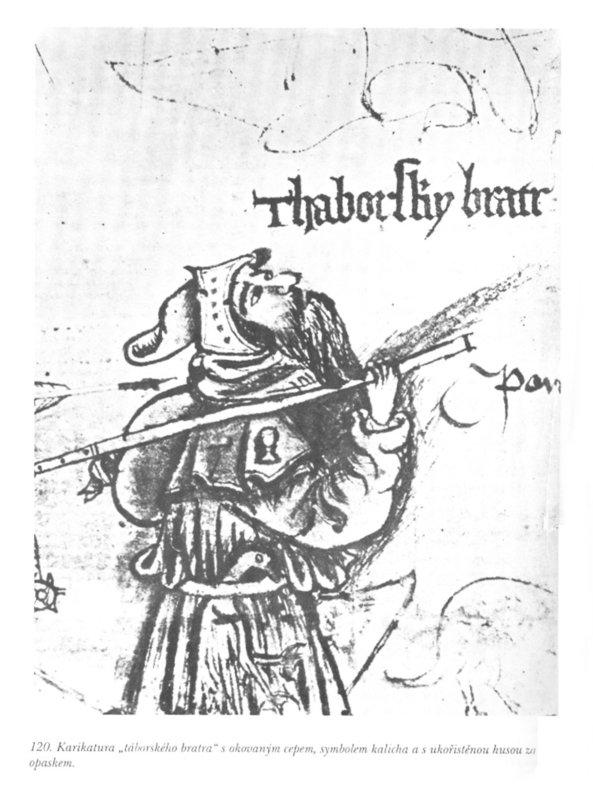
Find the perfect fit with Amazon Prime. Try Before You Buy.
Taborite brethren, Hussite, 15th century Bohemia

Image source: myarmoury


120. Karikatura "taborskÚlio bratra" s okovanym cepem, symbolem kalicha a s ukoristÚnou husou za opaskem.
Caricature of a "tabor brother" with a studded flail, a chalice symbol, and a captured goose in his belt.
Tabor ms 195
Extract from Armies of the Middle Ages, Volume 2 by Ian Heath:
At the start of their revolt the majority of Hussites were armed with little more than peasant weapons, with slings, bills, scythes and, above all, flails predominating. In fact the Bohemians were noted for their military flails even before the Hussite wars - Konrad Kyeser, for example, at the time living in Bohemia, recommended the use of flails in his military treatise of 1405 - and the Behemisch drischel ('Bohemian flails') subsequently achieved a notoriety that was to last right up to Maximilian's time. The Hussites called their flailmen cepnici, and one such is depicted in 123, based on a contemporary drawing of one of the Taborite brethren. One detail worthy of notice is the small red chalice, the symbol of the Hussite movement, embroidered on his hood for identification, seemingly a common practice amongst the Hussites.